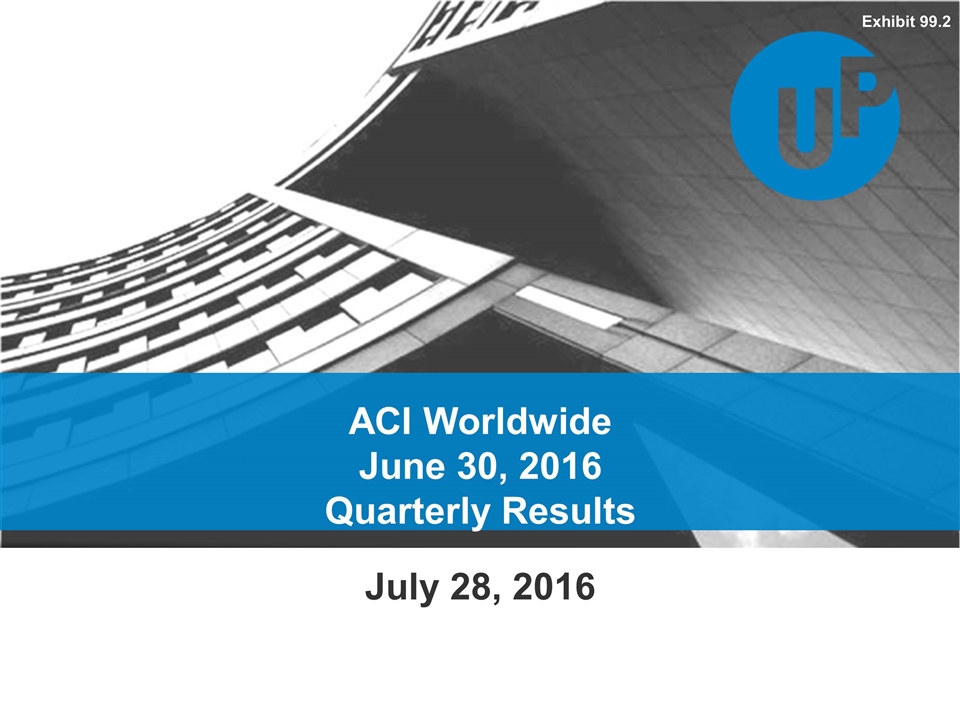
ACI Worldwide June 30, 2016 Quarterly Results July 28, 2016 Exhibit 99.2
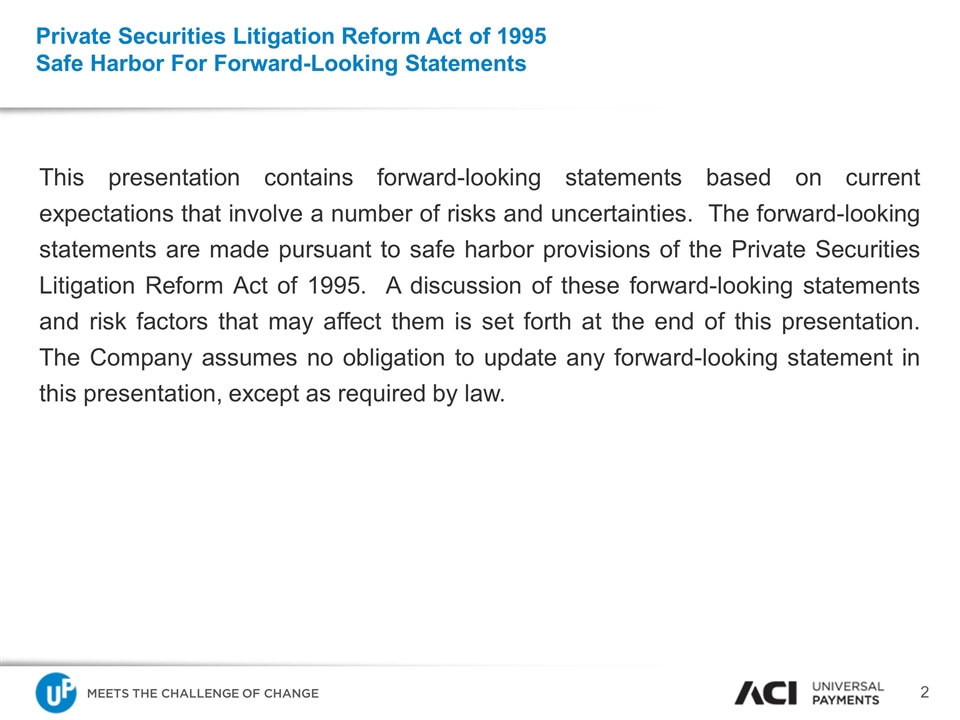
Private Securities Litigation Reform Act of 1995 Safe Harbor For Forward-Looking Statements This presentation contains forward-looking statements based on current expectations that involve a number of risks and uncertainties. The forward-looking statements are made pursuant to safe harbor provisions of the Private Securities Litigation Reform Act of 1995. A discussion of these forward-looking statements and risk factors that may affect them is set forth at the end of this presentation. The Company assumes no obligation to update any forward-looking statement in this presentation, except as required by law.
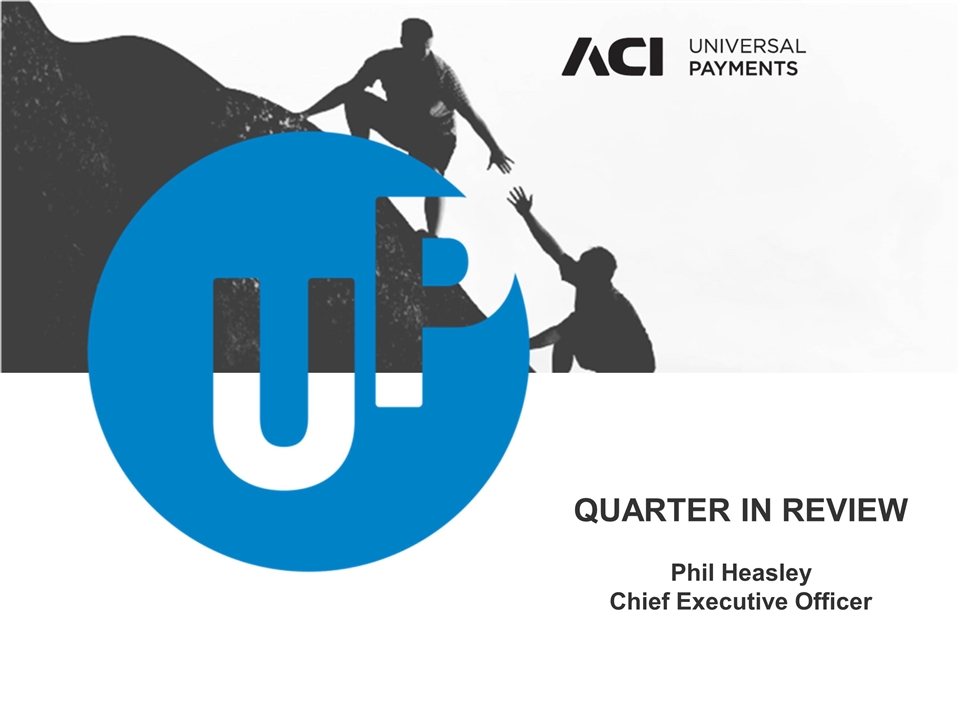
QUARTER IN REVIEW Phil Heasley Chief Executive Officer
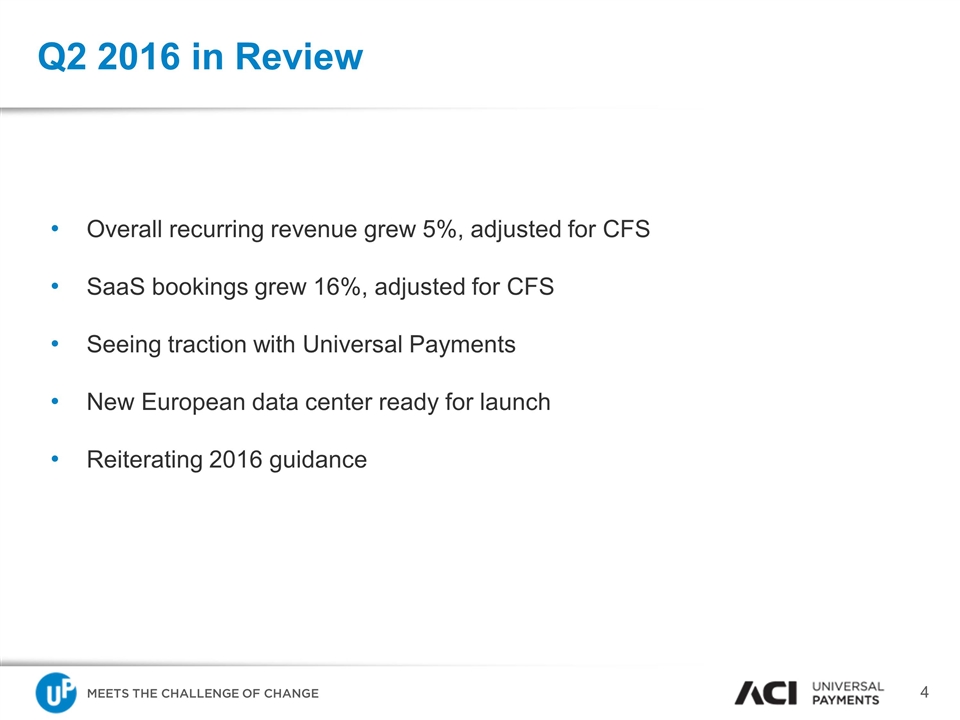
Q2 2016 in Review Overall recurring revenue grew 5%, adjusted for CFS SaaS bookings grew 16%, adjusted for CFS Seeing traction with Universal Payments New European data center ready for launch Reiterating 2016 guidance
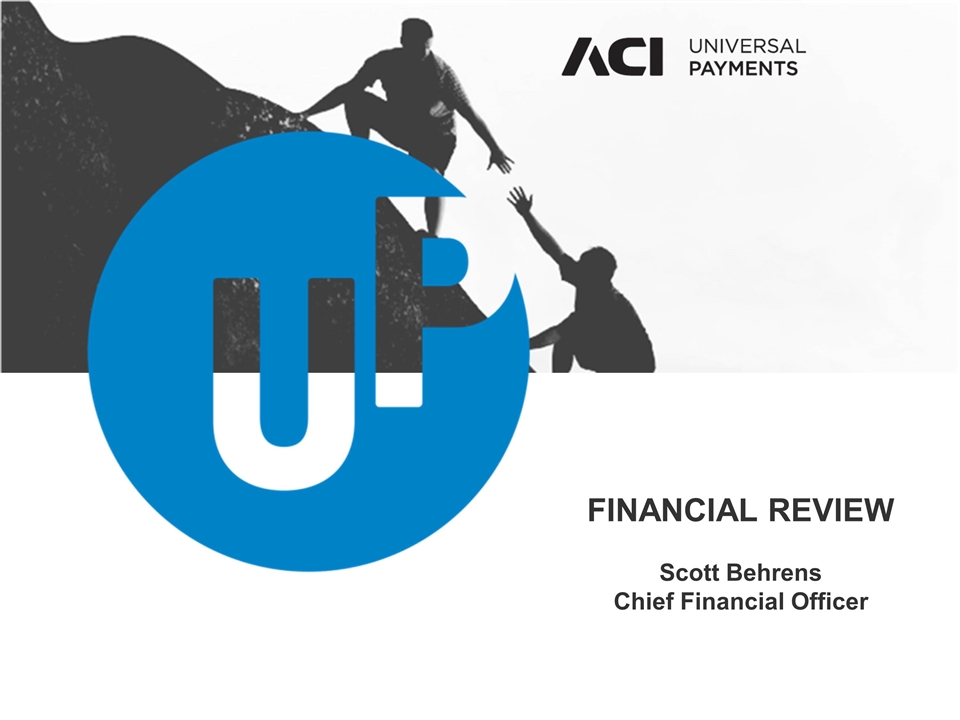
FINANCIAL REVIEW Scott Behrens Chief Financial Officer
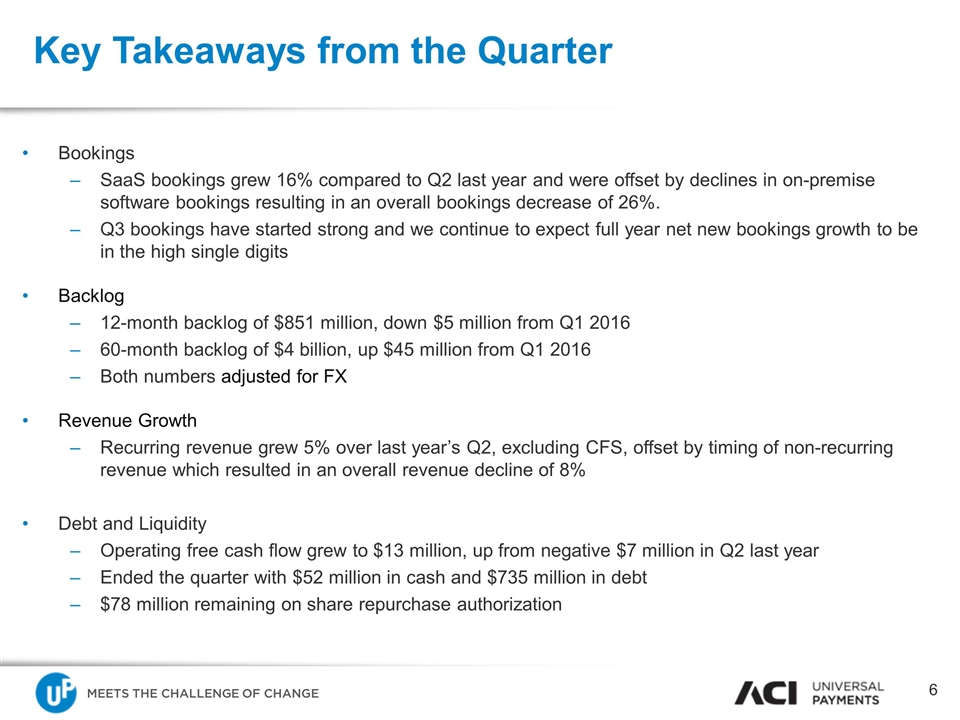
Key Takeaways from the Quarter Bookings SaaS bookings grew 16% compared to Q2 last year and were offset by declines in on-premise software bookings resulting in an overall bookings decrease of 26%. Q3 bookings have started strong and we continue to expect full year net new bookings growth to be in the high single digits Backlog 12-month backlog of $851 million, down $5 million from Q1 2016 60-month backlog of $4 billion, up $45 million from Q1 2016 Both numbers adjusted for FX Revenue Growth Recurring revenue grew 5% over last year’s Q2, excluding CFS, offset by timing of non-recurring revenue which resulted in an overall revenue decline of 8% Debt and Liquidity Operating free cash flow grew to $13 million, up from negative $7 million in Q2 last year Ended the quarter with $52 million in cash and $735 million in debt $78 million remaining on share repurchase authorization
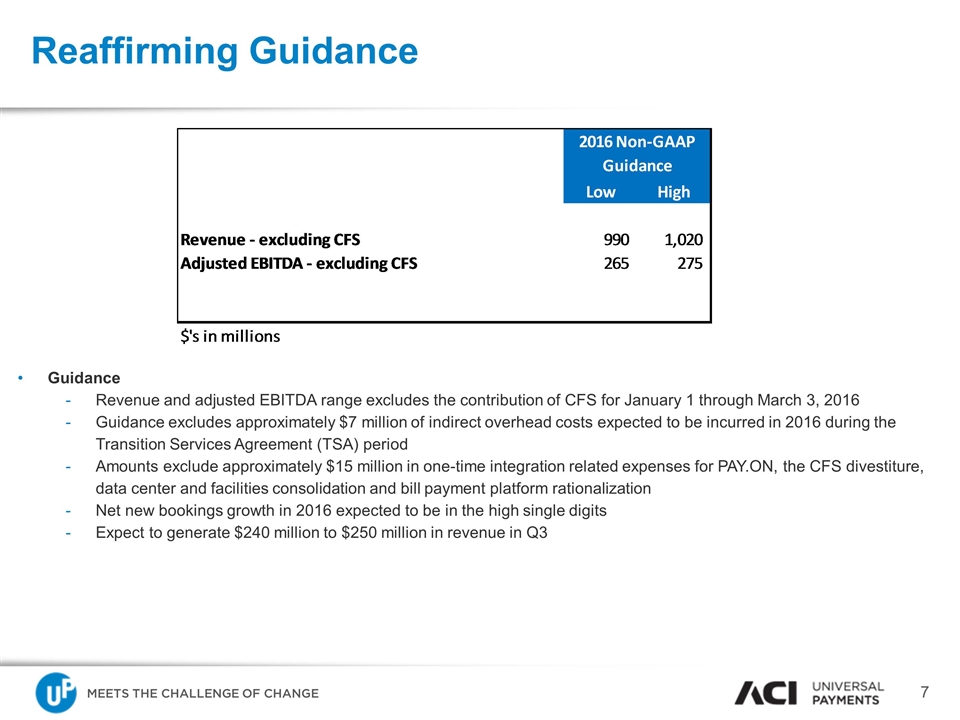
Reaffirming Guidance Guidance Revenue and adjusted EBITDA range excludes the contribution of CFS for January 1 through March 3, 2016 Guidance excludes approximately $7 million of indirect overhead costs expected to be incurred in 2016 during the Transition Services Agreement (TSA) period Amounts exclude approximately $15 million in one-time integration related expenses for PAY.ON, the CFS divestiture, data center and facilities consolidation and bill payment platform rationalization Net new bookings growth in 2016 expected to be in the high single digits Expect to generate $240 million to $250 million in revenue in Q3
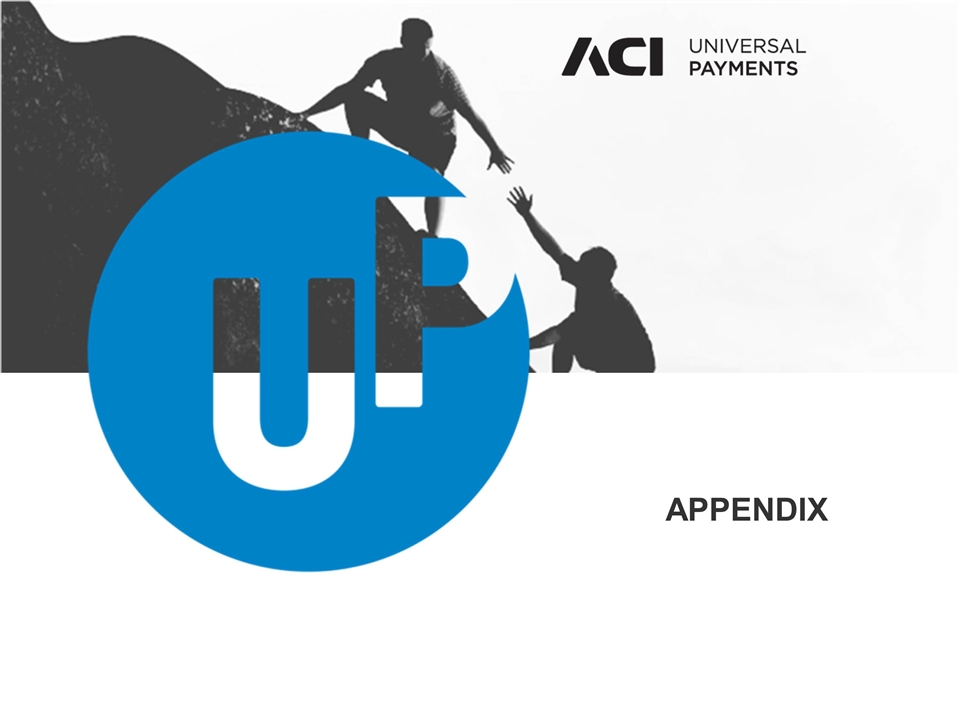
APPENDIX
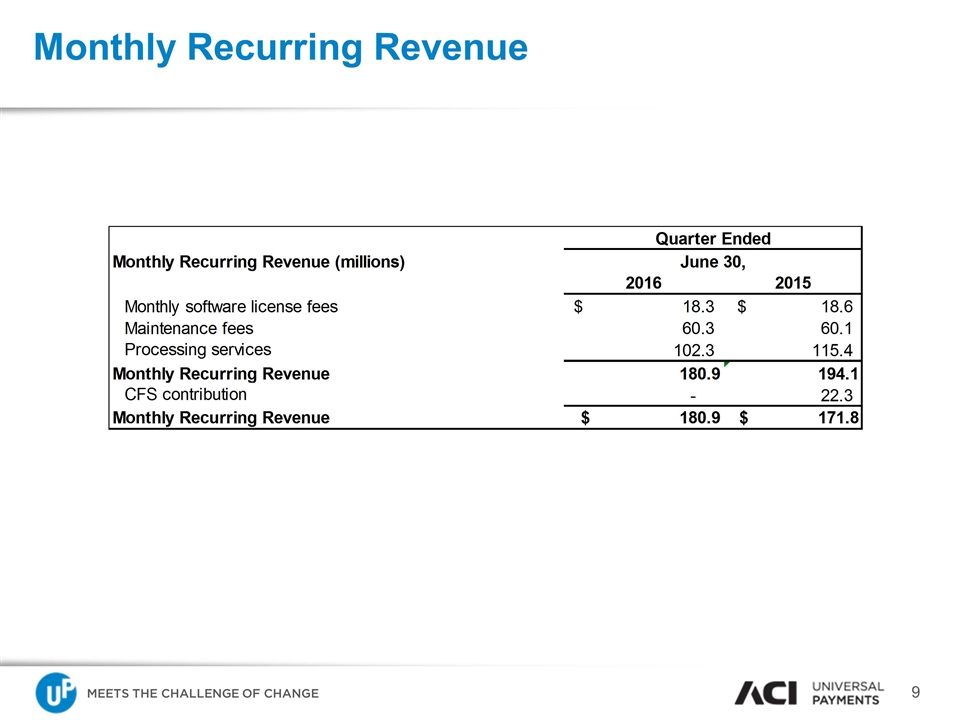
Monthly Recurring Revenue
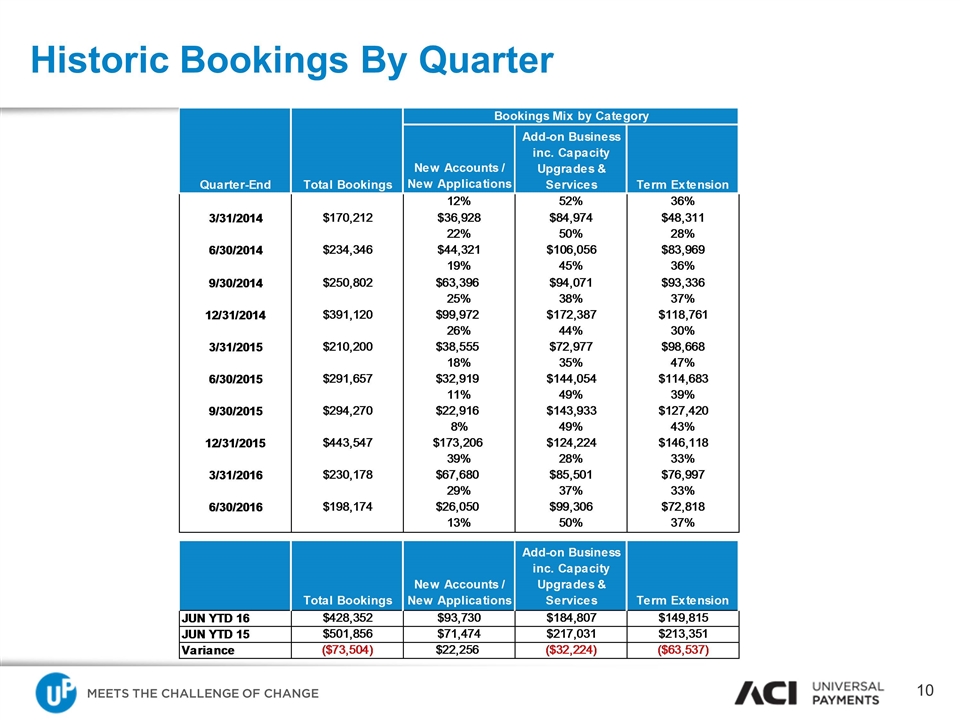
Historic Bookings By Quarter
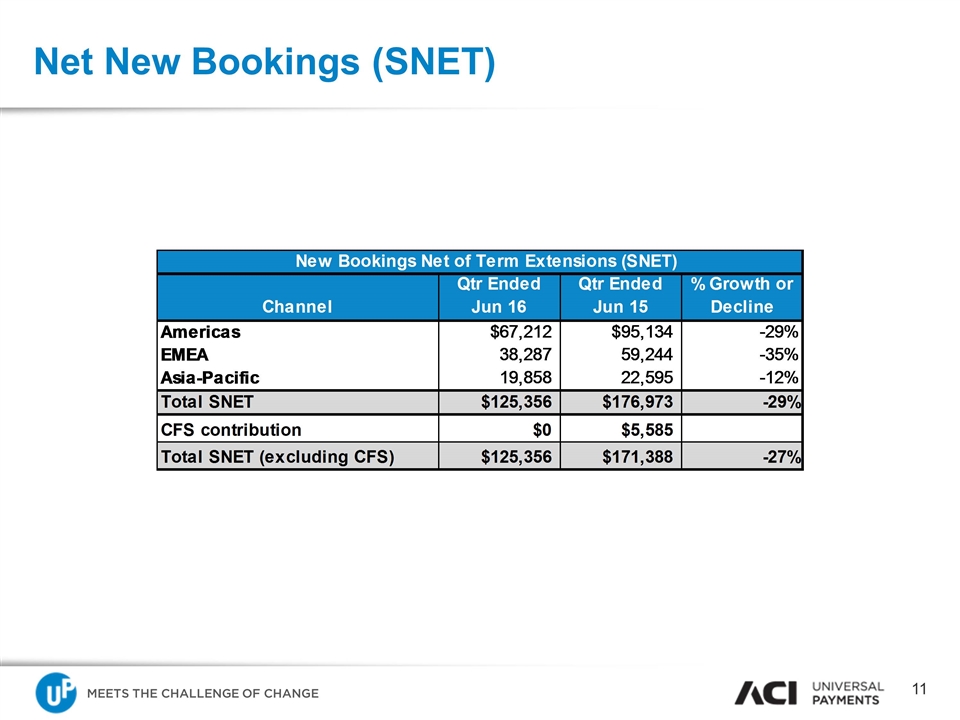
Net New Bookings (SNET)
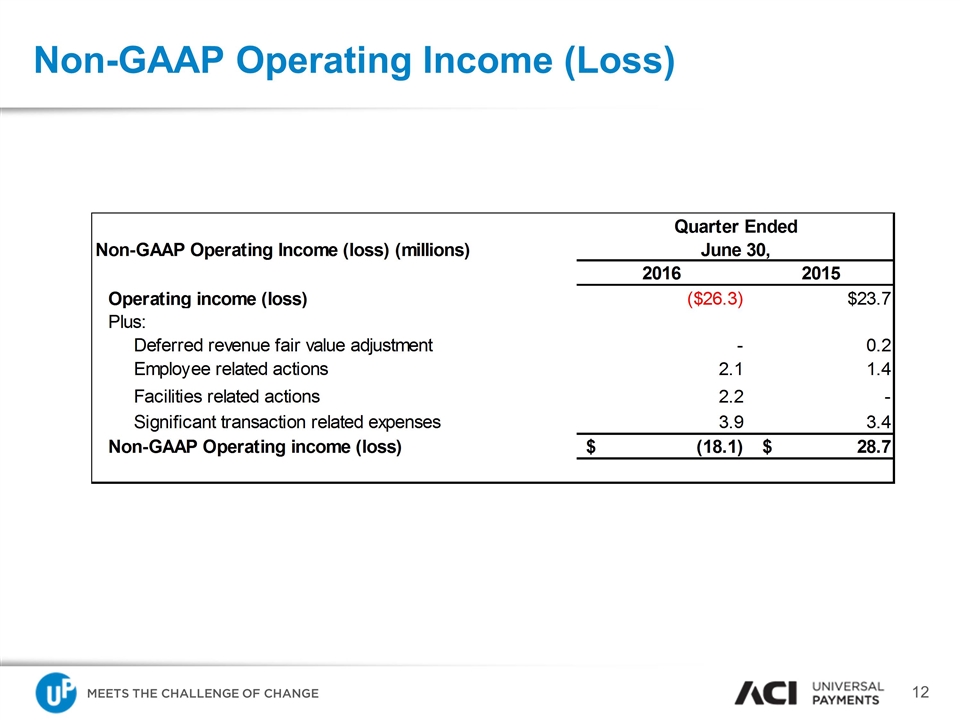
Non-GAAP Operating Income (Loss)
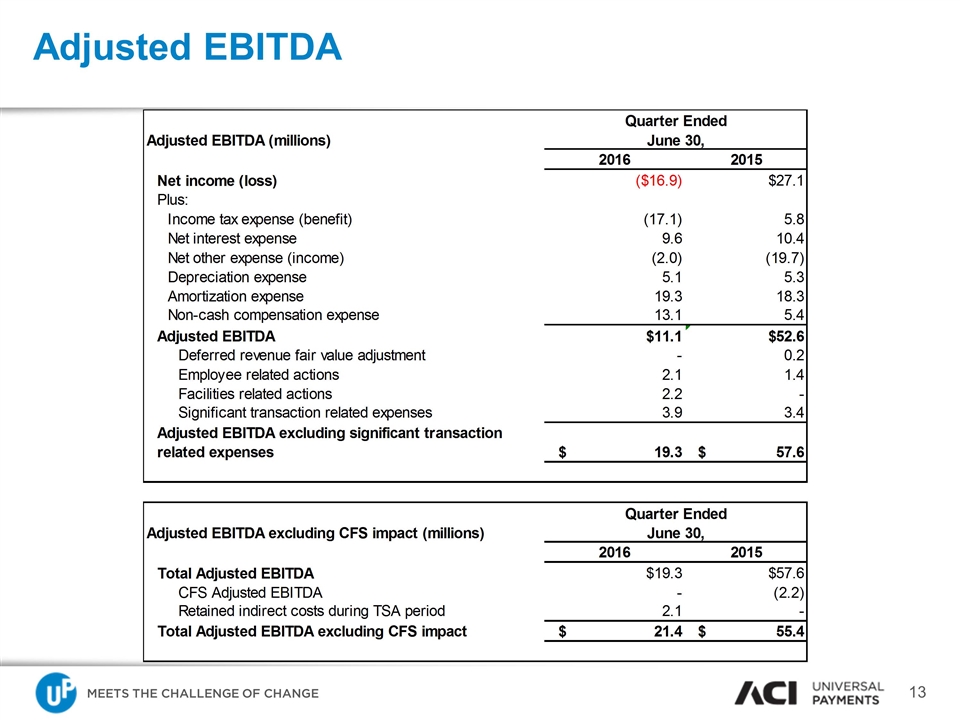
Adjusted EBITDA
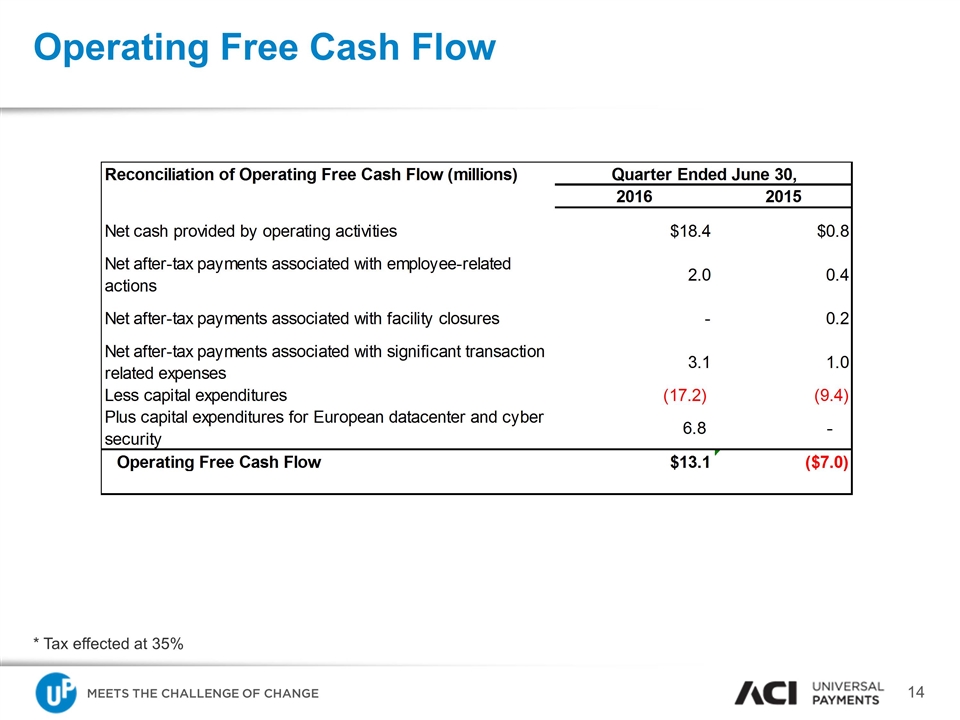
Operating Free Cash Flow * Tax effected at 35%
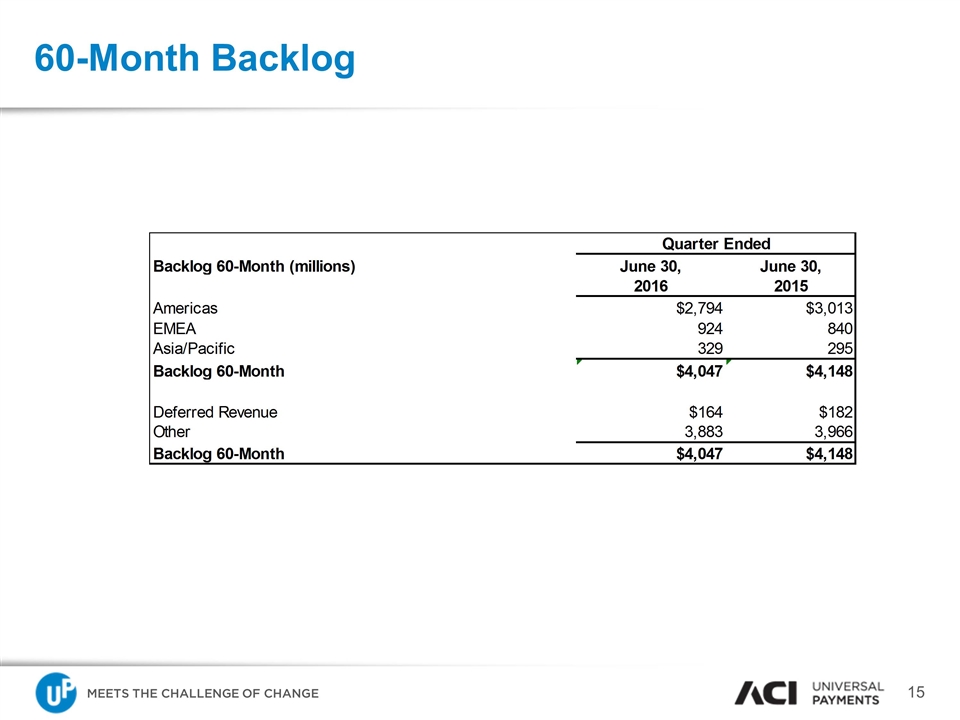
60-Month Backlog
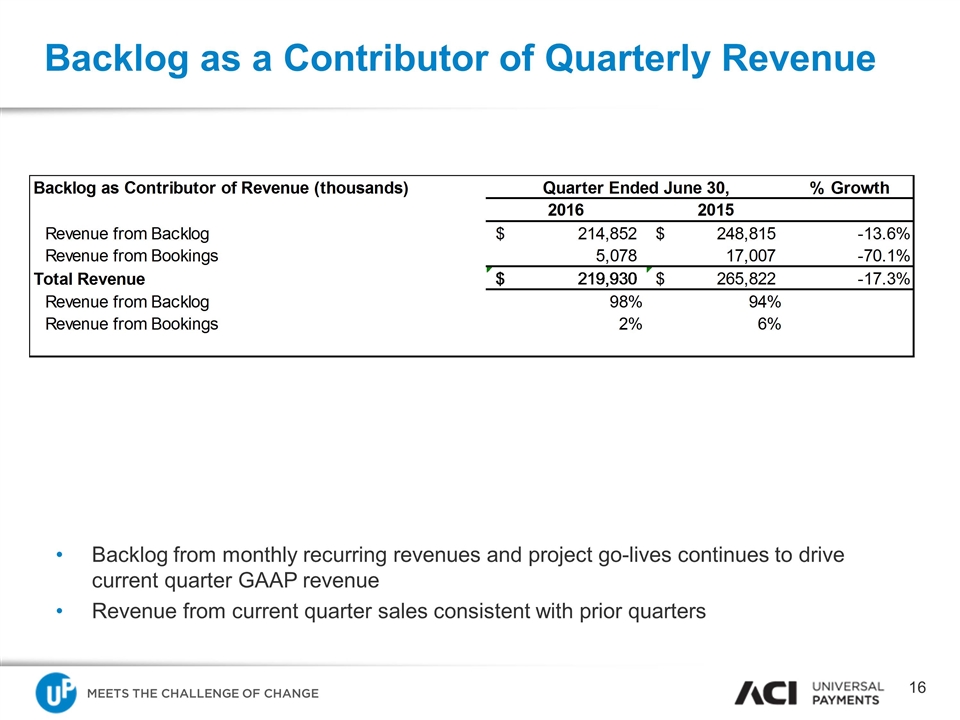
Backlog as a Contributor of Quarterly Revenue Backlog from monthly recurring revenues and project go-lives continues to drive current quarter GAAP revenue Revenue from current quarter sales consistent with prior quarters
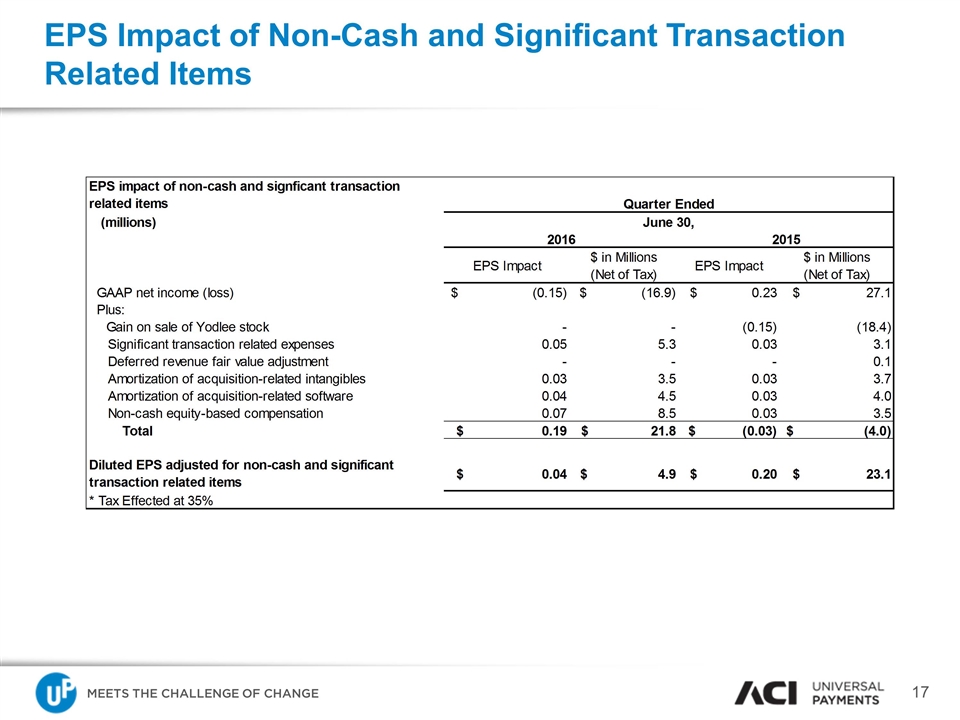
EPS Impact of Non-Cash and Significant Transaction Related Items
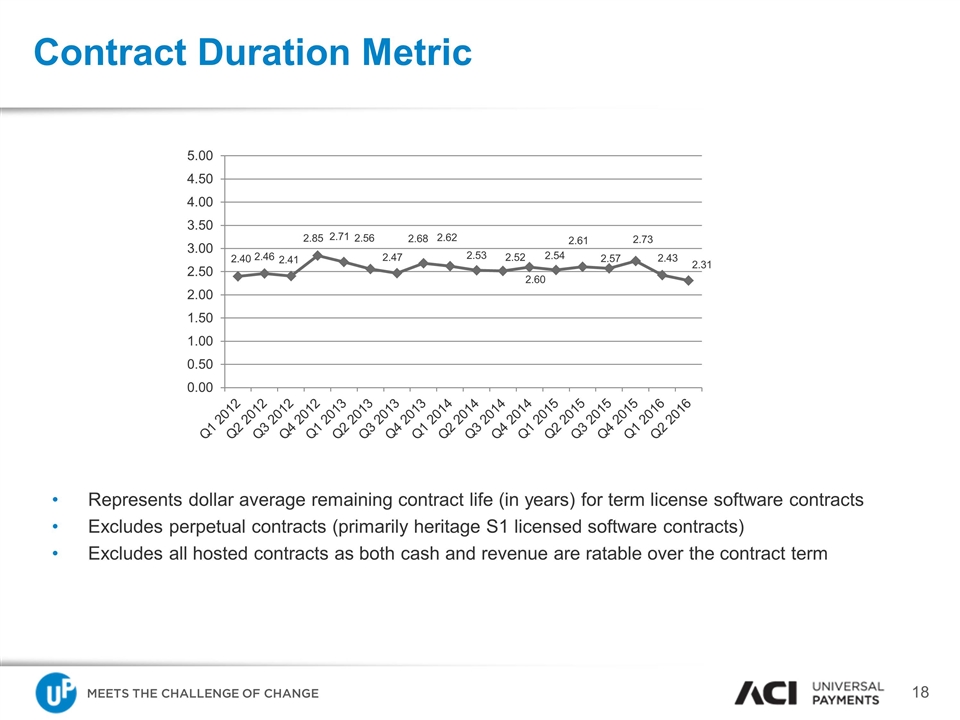
Contract Duration Metric Represents dollar average remaining contract life (in years) for term license software contracts Excludes perpetual contracts (primarily heritage S1 licensed software contracts) Excludes all hosted contracts as both cash and revenue are ratable over the contract term
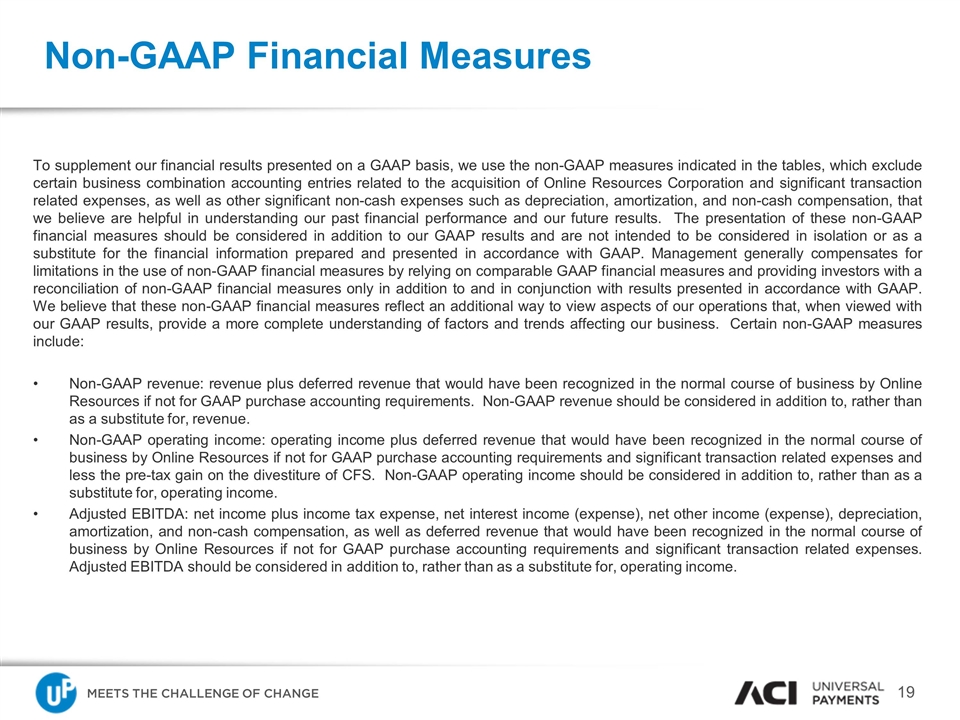
Non-GAAP Financial Measures To supplement our financial results presented on a GAAP basis, we use the non-GAAP measures indicated in the tables, which exclude certain business combination accounting entries related to the acquisition of Online Resources Corporation and significant transaction related expenses, as well as other significant non-cash expenses such as depreciation, amortization, and non-cash compensation, that we believe are helpful in understanding our past financial performance and our future results. The presentation of these non-GAAP financial measures should be considered in addition to our GAAP results and are not intended to be considered in isolation or as a substitute for the financial information prepared and presented in accordance with GAAP. Management generally compensates for limitations in the use of non-GAAP financial measures by relying on comparable GAAP financial measures and providing investors with a reconciliation of non-GAAP financial measures only in addition to and in conjunction with results presented in accordance with GAAP. We believe that these non-GAAP financial measures reflect an additional way to view aspects of our operations that, when viewed with our GAAP results, provide a more complete understanding of factors and trends affecting our business. Certain non-GAAP measures include: Non-GAAP revenue: revenue plus deferred revenue that would have been recognized in the normal course of business by Online Resources if not for GAAP purchase accounting requirements. Non-GAAP revenue should be considered in addition to, rather than as a substitute for, revenue. Non-GAAP operating income: operating income plus deferred revenue that would have been recognized in the normal course of business by Online Resources if not for GAAP purchase accounting requirements and significant transaction related expenses and less the pre-tax gain on the divestiture of CFS. Non-GAAP operating income should be considered in addition to, rather than as a substitute for, operating income. Adjusted EBITDA: net income plus income tax expense, net interest income (expense), net other income (expense), depreciation, amortization, and non-cash compensation, as well as deferred revenue that would have been recognized in the normal course of business by Online Resources if not for GAAP purchase accounting requirements and significant transaction related expenses. Adjusted EBITDA should be considered in addition to, rather than as a substitute for, operating income.
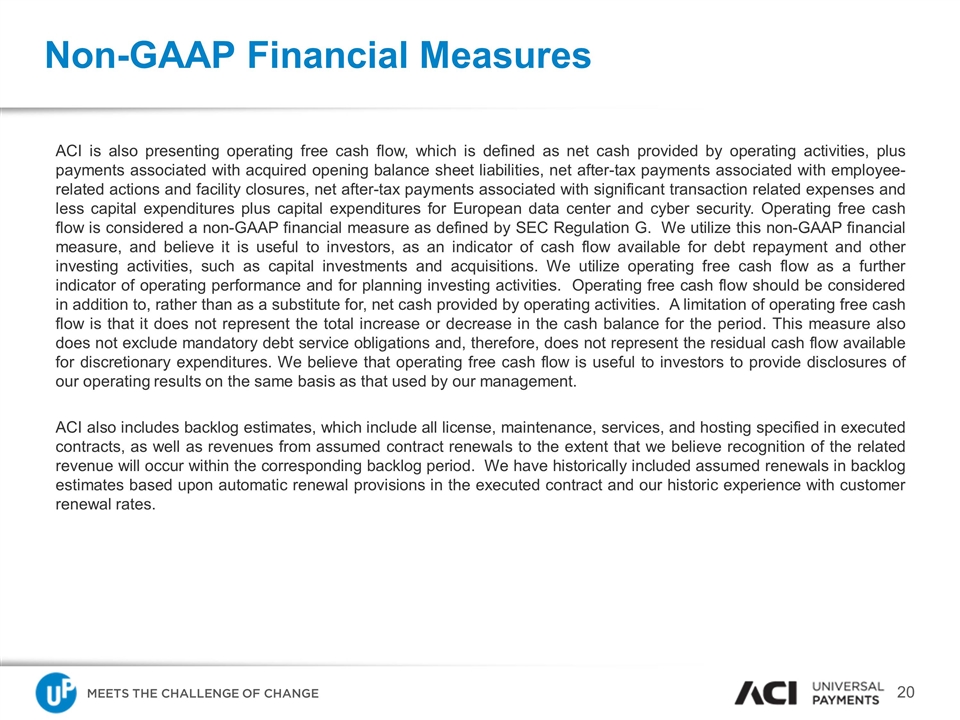
Non-GAAP Financial Measures ACI is also presenting operating free cash flow, which is defined as net cash provided by operating activities, plus payments associated with acquired opening balance sheet liabilities, net after-tax payments associated with employee-related actions and facility closures, net after-tax payments associated with significant transaction related expenses and less capital expenditures plus capital expenditures for European data center and cyber security. Operating free cash flow is considered a non-GAAP financial measure as defined by SEC Regulation G. We utilize this non-GAAP financial measure, and believe it is useful to investors, as an indicator of cash flow available for debt repayment and other investing activities, such as capital investments and acquisitions. We utilize operating free cash flow as a further indicator of operating performance and for planning investing activities. Operating free cash flow should be considered in addition to, rather than as a substitute for, net cash provided by operating activities. A limitation of operating free cash flow is that it does not represent the total increase or decrease in the cash balance for the period. This measure also does not exclude mandatory debt service obligations and, therefore, does not represent the residual cash flow available for discretionary expenditures. We believe that operating free cash flow is useful to investors to provide disclosures of our operating results on the same basis as that used by our management. ACI also includes backlog estimates, which include all license, maintenance, services, and hosting specified in executed contracts, as well as revenues from assumed contract renewals to the extent that we believe recognition of the related revenue will occur within the corresponding backlog period. We have historically included assumed renewals in backlog estimates based upon automatic renewal provisions in the executed contract and our historic experience with customer renewal rates.
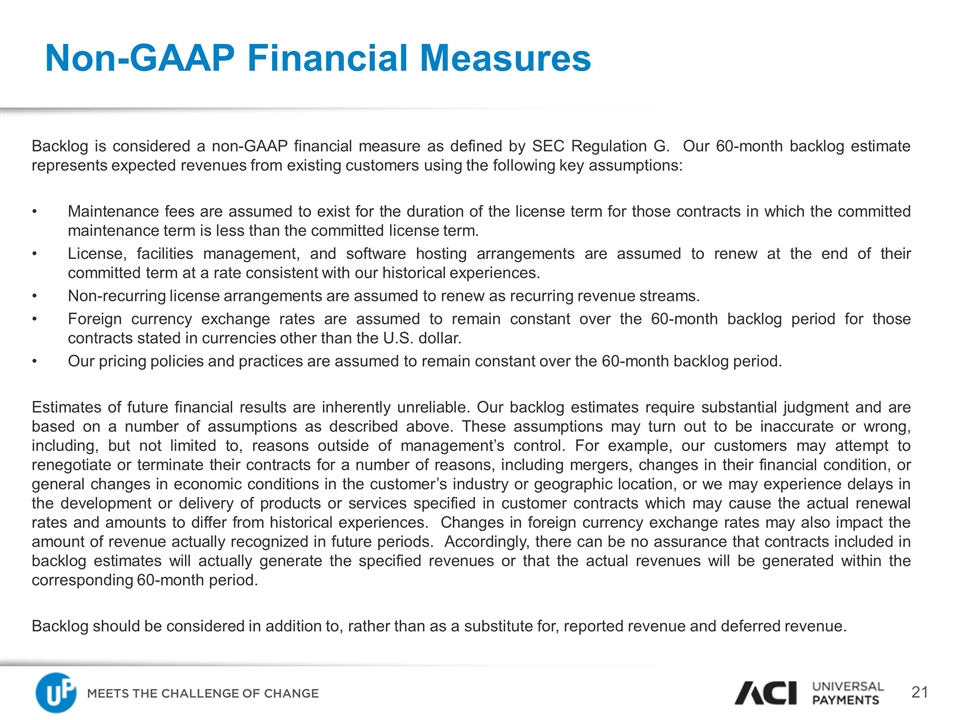
Non-GAAP Financial Measures Backlog is considered a non-GAAP financial measure as defined by SEC Regulation G. Our 60-month backlog estimate represents expected revenues from existing customers using the following key assumptions: Maintenance fees are assumed to exist for the duration of the license term for those contracts in which the committed maintenance term is less than the committed license term. License, facilities management, and software hosting arrangements are assumed to renew at the end of their committed term at a rate consistent with our historical experiences. Non-recurring license arrangements are assumed to renew as recurring revenue streams. Foreign currency exchange rates are assumed to remain constant over the 60-month backlog period for those contracts stated in currencies other than the U.S. dollar. Our pricing policies and practices are assumed to remain constant over the 60-month backlog period. Estimates of future financial results are inherently unreliable. Our backlog estimates require substantial judgment and are based on a number of assumptions as described above. These assumptions may turn out to be inaccurate or wrong, including, but not limited to, reasons outside of management’s control. For example, our customers may attempt to renegotiate or terminate their contracts for a number of reasons, including mergers, changes in their financial condition, or general changes in economic conditions in the customer’s industry or geographic location, or we may experience delays in the development or delivery of products or services specified in customer contracts which may cause the actual renewal rates and amounts to differ from historical experiences. Changes in foreign currency exchange rates may also impact the amount of revenue actually recognized in future periods. Accordingly, there can be no assurance that contracts included in backlog estimates will actually generate the specified revenues or that the actual revenues will be generated within the corresponding 60-month period. Backlog should be considered in addition to, rather than as a substitute for, reported revenue and deferred revenue.
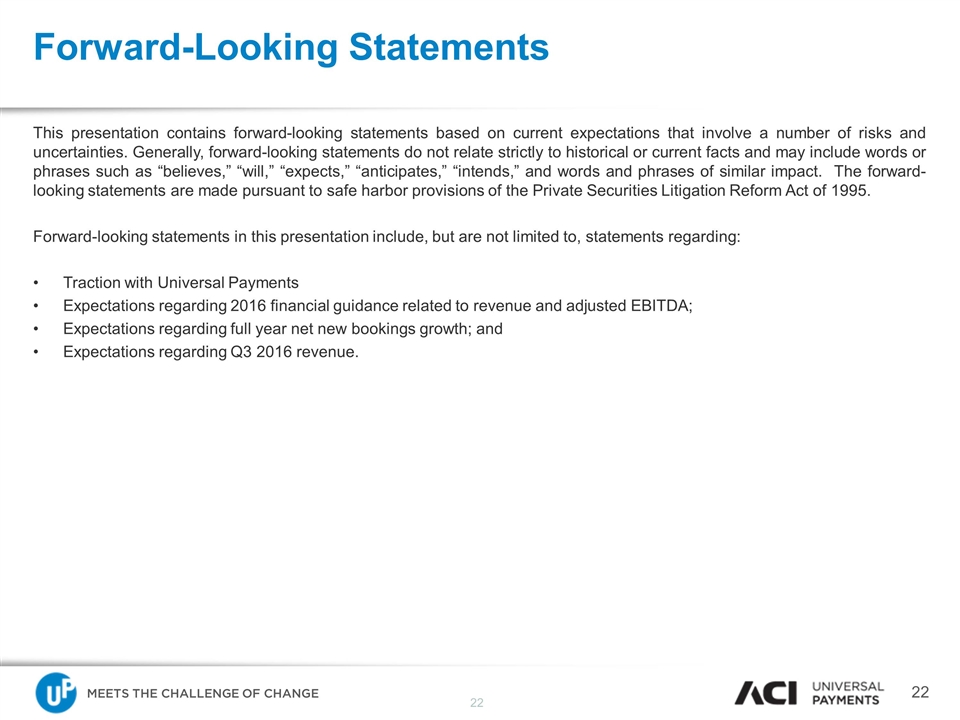
Forward-Looking Statements This presentation contains forward-looking statements based on current expectations that involve a number of risks and uncertainties. Generally, forward-looking statements do not relate strictly to historical or current facts and may include words or phrases such as “believes,” “will,” “expects,” “anticipates,” “intends,” and words and phrases of similar impact. The forward-looking statements are made pursuant to safe harbor provisions of the Private Securities Litigation Reform Act of 1995. Forward-looking statements in this presentation include, but are not limited to, statements regarding: Traction with Universal Payments Expectations regarding 2016 financial guidance related to revenue and adjusted EBITDA; Expectations regarding full year net new bookings growth; and Expectations regarding Q3 2016 revenue.
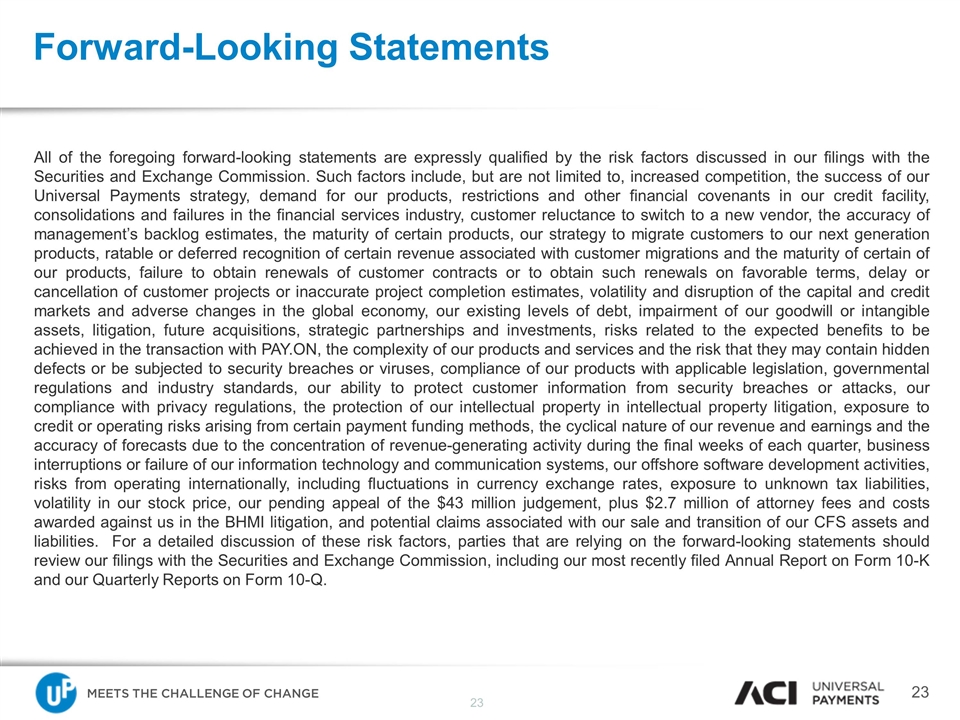
Forward-Looking Statements All of the foregoing forward-looking statements are expressly qualified by the risk factors discussed in our filings with the Securities and Exchange Commission. Such factors include, but are not limited to, increased competition, the success of our Universal Payments strategy, demand for our products, restrictions and other financial covenants in our credit facility, consolidations and failures in the financial services industry, customer reluctance to switch to a new vendor, the accuracy of management’s backlog estimates, the maturity of certain products, our strategy to migrate customers to our next generation products, ratable or deferred recognition of certain revenue associated with customer migrations and the maturity of certain of our products, failure to obtain renewals of customer contracts or to obtain such renewals on favorable terms, delay or cancellation of customer projects or inaccurate project completion estimates, volatility and disruption of the capital and credit markets and adverse changes in the global economy, our existing levels of debt, impairment of our goodwill or intangible assets, litigation, future acquisitions, strategic partnerships and investments, risks related to the expected benefits to be achieved in the transaction with PAY.ON, the complexity of our products and services and the risk that they may contain hidden defects or be subjected to security breaches or viruses, compliance of our products with applicable legislation, governmental regulations and industry standards, our ability to protect customer information from security breaches or attacks, our compliance with privacy regulations, the protection of our intellectual property in intellectual property litigation, exposure to credit or operating risks arising from certain payment funding methods, the cyclical nature of our revenue and earnings and the accuracy of forecasts due to the concentration of revenue-generating activity during the final weeks of each quarter, business interruptions or failure of our information technology and communication systems, our offshore software development activities, risks from operating internationally, including fluctuations in currency exchange rates, exposure to unknown tax liabilities, volatility in our stock price, our pending appeal of the $43 million judgement, plus $2.7 million of attorney fees and costs awarded against us in the BHMI litigation, and potential claims associated with our sale and transition of our CFS assets and liabilities. For a detailed discussion of these risk factors, parties that are relying on the forward-looking statements should review our filings with the Securities and Exchange Commission, including our most recently filed Annual Report on Form 10-K and our Quarterly Reports on Form 10-Q.